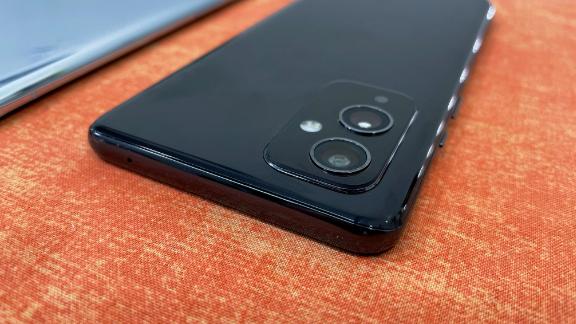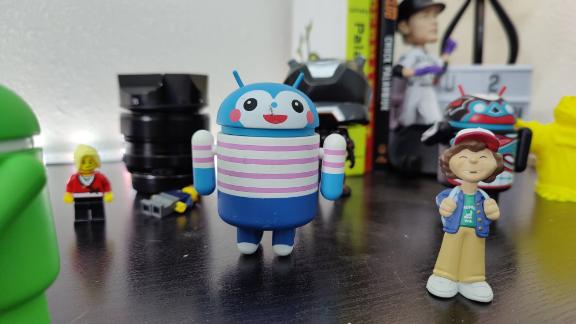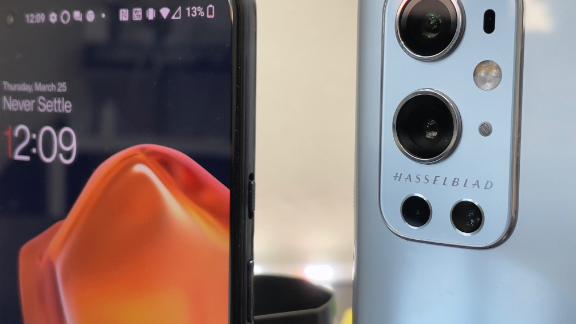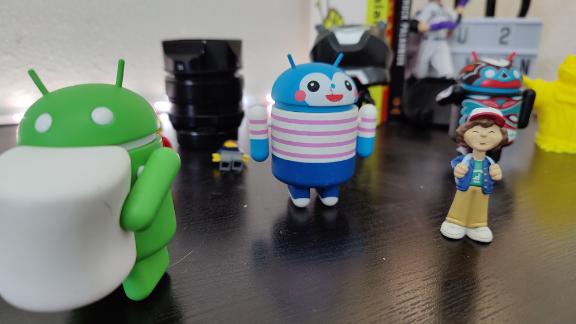The latest batch of phones from OnePlus are official. The 9 and 9 Pro were announced earlier this week, after OnePlus founder and CEO Pete Lau spent the days leading up to the announcement slowly leaking and detailing the features of both phones.
The OnePlus 9 starts at $729, while the OnePlus 9 Pro starts at $969. Preorders for both phones are open right now, with deliveries shipping March 26. You can order an unlocked version of either phone directly from OnePlus, or order from T-Mobile, the only US carrier that will be selling either OnePlus model.
We’ve been testing both phones for a couple of weeks now, and have found plenty of things to love about either one. Let’s take a closer look, starting with the features the OnePlus 9 and OnePlus 9 Pro share.
The who, what and how
Who these are for: The OnePlus 9 and OnePlus 9 Pro have many of the same features you’d find on the Galaxy S21 series, but for a couple of hundred dollars less. The OnePlus approach is for those who want a reliable Android device and experience, but are shopping for a new phone on a budget.
What you need to know: The OnePlus 9 and OnePlus 9 Pro have a lot of overlapping features. For example, both phones use the same processor, cellular modem for 5G connectivity, and the same size batteries. But beware — if you want to use 5G on the 9 or 9 Pro in the US, you’ll need to be a T-Mobile customer. The company is working on 5G support for Verizon, but it’s unclear when that will be added.
How they compare: The main storyline about the 9 and 9 Pro over previous OnePlus phones is that the company has finally fixed the camera issues that many have complained about in the past. And for the most part, that’s true. The OnePlus 9 and 9 Pro have the best camera experience and output that OnePlus has used in a smartphone to date. The quality is close to the same as the Galaxy S21 or Apple’s iPhone 12 line, but there’s still a little bit of work to be done.
Let’s talk about similarities
Design and software
At first glance, both the OnePlus 9 and 9 Pro look nearly identical. They both feature the same core design, but there are subtle differences that you start to discover as you begin to look closer. For instance, the OnePlus 9’s display lacks curved edges, while the 9 Pro’s screen has understated curves on both vertical edges that help eliminate accidental touches when you’re holding the phone.
As the saying goes, you can’t judge a phone by its design and it’s what’s on the inside that truly matters (at least, we think that’s how it goes).
When it comes to the OnePlus 9 and 9 Pro, the core of both phones is very similar. Both devices use Qualcomm’s Snapdragon 888 processor, boasting improved CPU and GPU performance. That powers Android 11 with a customized OnePlus interface and the result is a dependable experience that doesn’t get in the way of pure Android.
OxygenOS 11, similar to Samsung’s OneUI found on Galaxy devices, tweaks Google’s base Android operating system and provides additional features. For example, support for third-party icon packs is built into all OnePlus phones, making it easy to quickly customize the look of your phone without the need to install multiple apps.
Outside of its own photos app, OnePlus doesn’t add any duplicative apps or services like a custom browser instead of Chrome, or another messaging app instead of Google Messages.
OnePlus also optimizes performance through OxygenOS 11. Turbo Boost 3.0 is a fancy name for memory optimization that reduces how often you’ll need to refresh an app that’s been open in the background. It’s hard to gauge how effective the increased memory performance has been for us, but in our testing, we did notice that apps didn’t have to reload as often as they do on other Android devices, including older OnePlus models.
In using both phones daily for the last couple of weeks, we found the battery life to be more than enough to get through a full day of use. Our typical day is roughly 14 hours, with frequent use of either model. Use included typical work tasks, like triaging Slack messages or clearing out our inbox. The occasional YouTube video, Discord conversation, text messaging and social media checks were also a staple of our testing regimen.
You can get either phone with 8GB of RAM and 128GB of storage, or 12GB of RAM and 256GB of storage. Another shared feature is the battery size of 4,500mAh. The 9 and 9 Pro both support OnePlus Warp Charge 65T, which is capable of charging either phone from 0 to 100% in under 30 minutes. That’s seriously impressive, but there are some key differences in how the phones wirelessly charge that we’ll get to in a minute.
Performance
As CNN Underscored does with all smartphones we review, we also subjected the OnePlus 9 and OnePlus 9 Pro to our standard battery life benchmark. The test consists of playing a video file on loop using the VLC app. The phone is charged to 100%, has airplane mode activated and the display brightness set to 50%. We monitored the phones using a camera to catch the exact moment the battery loses power.
Our test saw both phones match one another, powering through 20 hours and 27 minutes before powering down. That’s 8 hours longer than the Galaxy S21, and double the battery life of the S21 Ultra. Crazy.
With both OnePlus phones having the same internals, we expected the performance on both phones to be practically identical. As we do with every device we test at CNN Underscored, we ran the OnePlus 9 and OnePlus 9 Pro through a benchmark test. We use the standard benchmark app GeekBench 5, which runs the phone through a series of tasks that act as a stress test. At the end of running through the benchmarks, our expectations were confirmed.
The OnePlus 9 scored 1,120 for the single-core test and 3,683 on the multi-core test. The 9 Pro matched the 9 for single-core performance with a score of 1,120, and came in a few points lower for multi-core at 3,610. In other words, both phones have the same performance. A fact that was backed by our personal experience in daily use and tasks like email, browsing the web, sending messages and using social media.
For some perspective, the scores were slightly better than Samsung’s Galaxy S21 scores of 1,110 for single core, 3,477 for multi-core. While the S21 Ultra scored 1,122 and 3,489, respectively.
Now that we’ve covered how similar these two phones are, let’s take a closer look at each one, breaking down the differences.
OnePlus 9

The OnePlus 9 is the more affordable option of the two new phones. It’s available with either 8GB of memory and 128GB of storage in astral black or winter mist for $729, or 12GB of memory and 256GB of storage in astral black for $829. OnePlus didn’t cut many, if any, corners when designing the OnePlus 9 as the lower-priced option. There are some differences, namely when it comes to the display and camera setup.
The OnePlus 9’s AMOLED display is the smaller of the two at 6.55-inches and has a resolution of 2,400 x 1,080. It’s a colorful screen with deep blacks and sharp contrast. And yes, the OnePlus 9 features the all-important spec of a 120Hz refresh rate. That’s fancy tech jargon that essentially states the amount of times per second the screen can refresh itself. The higher the number, the more lifelike the content on the display will appear.
The screen will automatically switch between 60Hz and 120Hz, depending on what you’re doing. For example, when you’re scrolling through a long email, your Twitter feed or gaming, the display will refresh at 120Hz to ensure text and graphics appear smooth and effortless. However, when you’re looking at a photo or watching a video, the screen will refresh at 60Hz, in order to save battery life. It’s an intelligent approach to a high refresh rate and in our testing we didn’t notice any hiccups or issues. Even when scrolling through a lengthy Google Sheet or doom scrolling in the Reddit app.
Let’s also be clear: This technology isn’t new to a OnePlus phone, and it’s something found in competing phones like the Galaxy S21 series. Notably, it’s missing on the iPhone 12 family though.
Aside from the display size and technology, much of the OnePlus 9 is the same as the 9 Pro. As we detailed above, it’s powered by the same processor and it makes for a zippy experience. The only other major area of difference is with the camera setup. Both phones feature Hasselblad branding and camera tuning that’s part of a fairly new partnership between the camera maker and OnePlus. According to OnePlus, over the next three we should see the partnership truly blossom and continue to grow.
Let’s break down the camera setup on the OnePlus 9:
- A 16 megapixel front facing lens
- A main 48-megapixel lens
- An ultra-wide 50 megapixel lens
- A 2-megapixel monochrome camera
You won’t find a telephoto lens that allows you to slightly zoom in before taking a photo on the OnePlus 9. And for video capabilities, you’re looking at up to 8K 30 frames-per-second video capture. Assuming you have a screen that is capable of playing 8K video for you to watch, that is.

The Hasselblad partnership comes into play on either model in two areas. First is Natural Color Calibration that OnePlus and Hasselblad worked together on. Both companies have tuned the camera system of the 9 and 9 Pro to reflect Hasselblad’s approach to accurate colors in the photos you take. Similar to Sony’s TV processing, Hasselblad aims to recreate reality in its highest form. You won’t find crazy levels of vibrancy or tones that make the image look processed, rather it’s designed to look as if you are viewing it in real life, just as your eye would see it.
The second area where you can see the partnership in action is in the Camera app’s Pro mode. This specific camera mode is designed to reflect Hasselblad’s image processing software. The camera app even features an orange shutter button — something Hasselblad users have come to expect.
If you’re like us and you truly enjoy using a macro camera on smartphones, don’t fret that OnePlus didn’t include a dedicated macro camera on either OnePlus 9 model. Instead, the company added macro photo capabilities to the ultra-wide angle camera that can focus on objects as close as 4 centimeters away.

We enjoyed using the camera on the OnePlus 9. It definitely looks and feels like a big improvement over last year’s OnePlus 8 and 8 Pro series. Picture quality has been excellent, with colors looking anything but dull. It’s unclear how much of that has to do with Hasselblad, or how much of that has to do with lessons learned by OnePlus after years of being critiqued for camera performance. We’d still give the edge to Samsung’s Galaxy S21 Ultra or any iPhone 12 model over the OnePlus 9, but OnePlus has made valuable improvements to its camera setup.
Before we pass final judgement on the OnePlus 9, let’s take a closer look at what the OnePlus 9 Pro offers to justify it’s higher price tag.
OnePlus 9 Pro

The slightly more expensive OnePlus 9 Pro has a few extra features when compared to the OnePlus 9, yet it undercuts the Galaxy S21 Ultra by a couple of hundred dollars. Like its smaller sibling, there are two options available to purchase. The $969 model of the 9 Pro offers 8GB of RAM and 128GB of storage and comes in morning mist. For $1,069, you get 12GB of RAM and 256GB for storage and the option of morning mist or pine green.
The OnePlus 9 Pro has a larger 6.7-inch AMOLED display with a resolution of 1440 x 3216, giving it a slightly higher resolution when compared to the standard OnePlus 9. In everyday use, both phones are really a joy to look at but the 9 Pro with the ability to produce more colors can be a bit more immersive. Where the 9 Pro really breaks away from its smaller sibling is with Fluid Display 2.0, which allows the screen to adjust its refresh rate from 1Hz to 120Hz based on what you’re doing. The end result of more precise adjustments is that it should lead to a 50% reduction in the amount of power the display uses.
For example, when you’re viewing a picture or reading in the Kindle app, the screen will tune itself to 1Hz. If you’re watching a movie, it’ll bump up to 24Hz, while scrolling a website will see the screen’s refresh rate jump all the way up to 120Hz. All of this happens in the background without you doing a thing, and leads to an overall smoother experience no matter what you’re doing on your phone.
The 9 Pro has four rear-facing cameras and an extra sensor.
- A 50-megapixel ultra-wide camera: As the name suggests this lens will let you capture a much wider field of view (aka more in a shot) without having to move. It’s great for wide cityscapes or getting a unique look on a portrait.
- A 48-megapixel main camera: While the number of megapixels is the same as on the OnePlus 9, the 9 Pro features a different Sony sensor. In our testing this yielded slightly sharper photos when compared to the OnePlus 9. But if we’re being totally honest, you have to look closely for any differences.
- A 8-megapixel telephoto lens: This camera will let you zoom in closer without physically moving or sacrificing the quality of the image. It features a 3.3x optical zoom function.
- A 2-megapixel monochrome camera:
- A laser-autofocus sensor: Similar to what Samsung uses on the S21 Ultra and Note 20 Ultra, this sensor helps the 9 Pro focus on a subject faster and with less hassle. It also results in better quality images.
The front-facing camera is 16-megapixels, and is found in the hole-punch cutout in the top-left corner of the display. It’s just as good for selfies and video calls as on the 9 Pro. Suffice to say it’s up to par with the likes of Apple and Samsung.
Hasselblad and OnePlus used the same Natural Color Calibration approach with the 9 Pro, along with the dedicated Pro mode that’s designed to mimic the Hasselblad experience.

We enjoyed using the camera on the 9 Pro more than the standard 9, not because the photo quality was dramatically better, but because we had more options. The telephoto lens, for example, allowed us to forget about digital zoom (which is what the OnePlus 9 uses) for those times when we wanted to get slightly closer to the subject. There is a 30x digital zoom option on the 9 Pro, but it doesn’t come close to looking as clear as the Galaxy S21 Ultra’s Space Zoom feature. We’d stay away from it unless you really, really want to get a closer shot at the cost of photo quality. The time to focus a shot was quicker, which meant fewer missed shots of kids or pets, something we can all relate to.
Like the OnePlus 9, the 9 Pro gets very close to matching the overall experience and quality of the S21 Ultra or iPhone 12. To be clear, at this point it’s splitting hairs and may very well come down to personal preference. But we’re excited to see where OnePlus is going with camera improvements.

As with the OnePlus 9, the 9 Pro can record video at up to 8K and 30 frames per second. It’s a fun item to read on a specification sheet, but right now it’s hard to find value in recording at that resolution. And you can save space by switching it to 4K or even 1080p HD.
Speedy wireless charging is something that sets the OnePlus 9 Pro apart, not only from the standard 9, but from every other smartphone we’ve tested. OnePlus calls it Warp Charge 50 Wireless and the 50 in the name reflects how many watts the 9 Pro can charge at. Wirelessly. The iPhone 12 line, for reference, charges at 7.5W. The Galaxy S21 Ultra can charge wirelessly at up to 15W. So 50W is pretty ludicrous … in the best way possible.
Now, you’ll need to buy the 50W wireless charger that OnePlus sells for $69.99 in order to use the faster charging speed, but for those who are constantly on the go it might be worth it. In our testing, the battery of the 9 Pro went from completely dead (with the device fully off) to 100% in under 45 minutes. Just crazy. Of course, you can opt to stick to wired charging at 65W which will charge the phone in under 30 minutes.
Let’s talk about 5G
At launch, the only 5G network that the 9 and 9 Pro will connect to is T-Mobile’s. OnePlus is working with Verizon Wireless to get certified for use on its 5G network, but at the moment Verizon customers will be limited to the network’s 4G LTE network. AT&T users will only have access to 4G LTE.
At CNN Underscored we’ve made the argument that 5G connectivity doesn’t matter a huge deal right now, because it’s not that much faster than current 4G LTE networks and coverage isn’t widespread enough for everyone to enjoy any true benefits. Right now, 5G is a way of future-proofing your investment and we stand by that assessment. That’s why it’s frustrating that neither the 9 or 9 Pro offers wider carrier support for 5G networks, especially given the fact that the 9 Pro is over $1,000 and a phone you’re likely to use for the next year or two.
Bottom line
There are so many similarities between the OnePlus 9 and OnePlus 9 Pro, it can be confusing to figure out which one to buy. Our money is on the 9 Pro, all day long. The added camera features, combined with a slightly larger display that’s just as comfortable and reliable to use as the standard 9, and wireless fast charging that completely charges the phone in 45 minutes, is worth the extra cost to us.
That said, the OnePlus 9 isn’t a bad phone by any means. The camera does a good job of capturing what you see in the viewfinder, and we’d be proud to post or share photos taken with it all over the internet.
The biggest downside to either phone is the lack of widespread 5G support with 5G carriers. The fact that AT&T customers can only use 4G, and Verizon customers will have to wait for 5G compatibility is frustrating, especially if you plan on using this phone for several years as most people do.
If 5G is important to you, the Galaxy S21 lineup is where you should start your Android phone search. If you don’t care about 5G and want a solid Android phone while saving some cash, then the OnePlus 9 or 9 Pro are where you should begin (and likely finish) your search.
Article From & Read More ( The OnePlus 9 and 9 Pro offer an excellent Android experience for less - CNN )https://ift.tt/3w041sp
Technology
Bagikan Berita Ini














0 Response to "The OnePlus 9 and 9 Pro offer an excellent Android experience for less - CNN"
Post a Comment